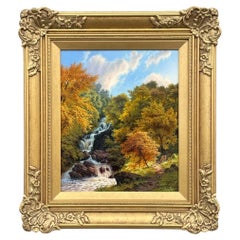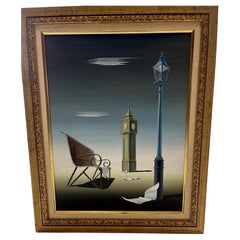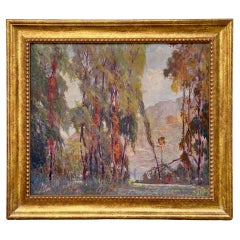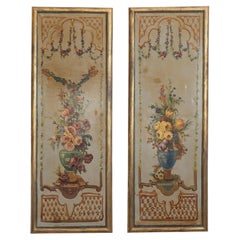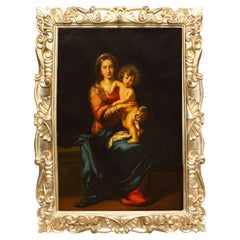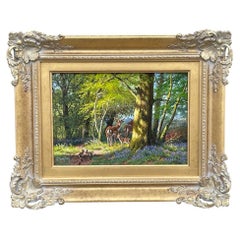Canvas Decorative Art
Late 20th Century Irish Modern Canvas Decorative Art
Canvas
1960s English Vintage Canvas Decorative Art
Canvas
1920s Arts and Crafts Vintage Canvas Decorative Art
Canvas
Mid-19th Century French Napoleon III Antique Canvas Decorative Art
Canvas, Giltwood
1910s Italian Baroque Vintage Canvas Decorative Art
Canvas, Giltwood
Late 20th Century Irish Modern Canvas Decorative Art
Canvas
1960s European Mid-Century Modern Vintage Canvas Decorative Art
Canvas, Acrylic
20th Century Spanish Canvas Decorative Art
Canvas, Wood
Late 19th Century French Art Deco Antique Canvas Decorative Art
Canvas, Giltwood, Paint
Early 20th Century French Art Deco Canvas Decorative Art
Canvas, Paint
Mid-20th Century French Art Deco Canvas Decorative Art
Canvas, Paint
Mid-20th Century Mid-Century Modern Canvas Decorative Art
Canvas, Wood, Paint
20th Century Irish Victorian Canvas Decorative Art
Canvas, Giltwood
1950s American Vintage Canvas Decorative Art
Canvas
18th Century French Antique Canvas Decorative Art
Canvas, Wood
2010s Japanese Organic Modern Canvas Decorative Art
Canvas, Thread, Straw
Early 19th Century English Victorian Antique Canvas Decorative Art
Canvas, Giltwood
18th Century Italian Baroque Antique Canvas Decorative Art
Canvas, Giltwood
21st Century and Contemporary American Modern Canvas Decorative Art
Canvas, Wood
1970s Spanish Modern Vintage Canvas Decorative Art
Stainless Steel
Late 19th Century German Black Forest Antique Canvas Decorative Art
Giltwood, Canvas
1910s Italian Baroque Vintage Canvas Decorative Art
Canvas, Giltwood
18th Century Italian Other Antique Canvas Decorative Art
Canvas
Late 19th Century Italian Baroque Antique Canvas Decorative Art
Canvas, Giltwood
20th Century French Canvas Decorative Art
Canvas, Paint
1910s English Vintage Canvas Decorative Art
Canvas, Paper
19th Century French Rococo Revival Antique Canvas Decorative Art
Canvas, Giltwood
Late 19th Century German Baroque Antique Canvas Decorative Art
Gesso, Canvas, Wood
1970s Japanese Japonisme Vintage Canvas Decorative Art
Canvas, Silk
Early 20th Century Swiss Islamic Canvas Decorative Art
Giltwood, Canvas
19th Century French Renaissance Revival Antique Canvas Decorative Art
Giltwood, Canvas
20th Century Aesthetic Movement Canvas Decorative Art
Canvas, Wood
Late 19th Century French Antique Canvas Decorative Art
Canvas, Giltwood
19th Century Italian Renaissance Revival Antique Canvas Decorative Art
Canvas
17th Century Chinese Qing Antique Canvas Decorative Art
Quartz
Mid-19th Century Colonial Revival Antique Canvas Decorative Art
Canvas, Paint
1890s English Late Victorian Antique Canvas Decorative Art
Canvas, Wood, Giltwood
21st Century and Contemporary American Modern Canvas Decorative Art
Canvas, Silk, Bamboo
1830s French Louis XVI Antique Canvas Decorative Art
Canvas, Paint
1980s American Other Vintage Canvas Decorative Art
Canvas, Giltwood
Mid-20th Century Russian Mid-Century Modern Canvas Decorative Art
Canvas, Wood
18th Century French Rococo Antique Canvas Decorative Art
Canvas
18th Century French Rococo Antique Canvas Decorative Art
Canvas
Early 1800s Italian Renaissance Antique Canvas Decorative Art
Wood, Gesso, Canvas
1980s American Vintage Canvas Decorative Art
Canvas
17th Century French Baroque Antique Canvas Decorative Art
Canvas, Giltwood
1980s American Organic Modern Vintage Canvas Decorative Art
Metal
19th Century French Rococo Antique Canvas Decorative Art
Masonite, Gesso, Canvas, Giltwood
Mid-20th Century French Mid-Century Modern Canvas Decorative Art
Canvas, Wood, Paint
20th Century French Canvas Decorative Art
Paint, Canvas
1920s American Art Nouveau Vintage Canvas Decorative Art
Canvas, Giltwood
Late 20th Century Indian Canvas Decorative Art
Canvas
1750s Antique Canvas Decorative Art
Canvas
21st Century and Contemporary American Organic Modern Canvas Decorative Art
Canvas, Bamboo, Silk
Late 18th Century Italian Rococo Antique Canvas Decorative Art
Canvas, Paint
Early 1900s Spanish Antique Canvas Decorative Art
Canvas, Wood
17th Century Dutch Baroque Antique Canvas Decorative Art
Canvas, Paint
1950s British Brutalist Vintage Canvas Decorative Art
Canvas
19th Century Italian Other Antique Canvas Decorative Art
Gesso, Canvas, Wood
Early 19th Century English Regency Antique Canvas Decorative Art
Canvas, Paint
Read More
At Colonial Williamsburg, Everything Old Is New Again
With the help of a new director, the Virginia institution's folk art and decorative arts museums are undergoing extensive upgrades.
New York’s Hirschl & Adler Showcases the American Workmanship and Design Panache of Neoclassical Treasures
The gallery's latest exhibition proves that museum-quality pieces entice and inspire, whether in traditional or more modern interiors.
